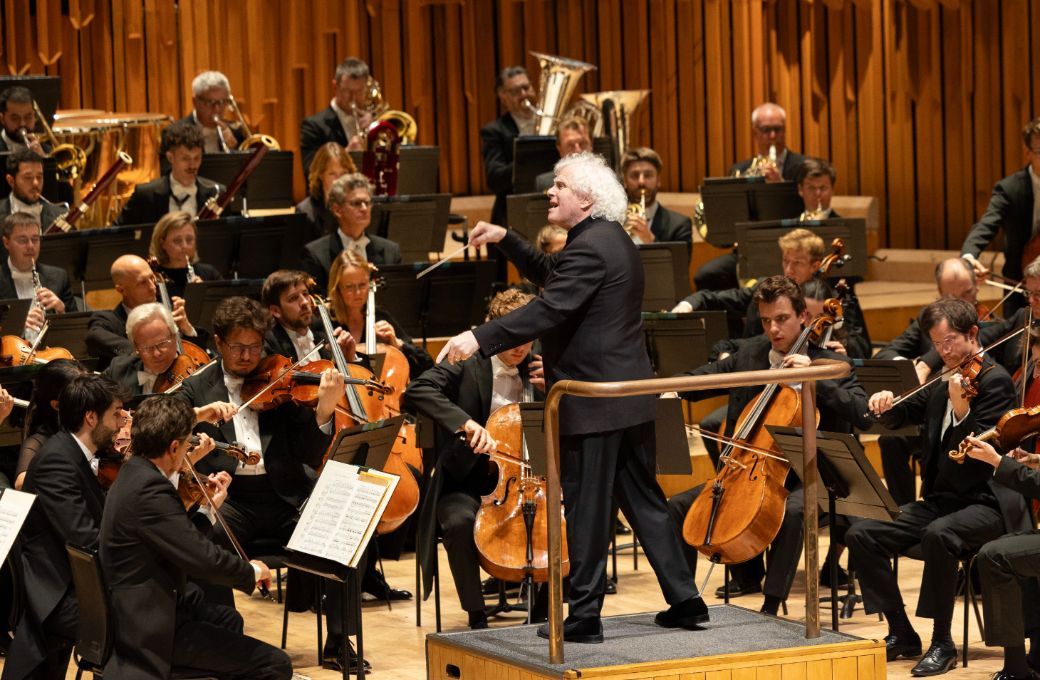Janáček’s three-movement Taras Bulba is based on a gruesome yarn from Gogol of a Cossack warrior who kills his own son Andrei in a battle, has to watch helplessly as his other son dies, and then is himself burned alive. In the opening of The Death of Andrei the cor anglais player excelled, heralding a fine night for the Bavarian Radio Symphony woodwinds. Thus the second movement, The Death of Ostap, had Ostap’s pain portrayed in piercing squeals from the E flat clarinet, while there was also a solo of glinting flair from the harp. In the closing movement The Prophecy and Death of Taras Bulba the music reached a stirring apotheosis in a blaze of brass, bells and organ.

But Taras Bulba has a wider range of music than that of a family’s suffering. The Polish dance elements, a second movement Mazurka and a third movement Krakowiak, were also vividly realised by the superb players of the BRSO under their Principal Conductor Sir Simon Rattle. The orchestra is regarded as one the world’s best – the programme proudly noted that “in 2023 the esteemed classical website Bachtrack named the BRSO third in a list of the world’s greatest orchestras”. On this evidence numbers one and two should watch out! The only possible caveat is that Janáček is here at his most edgy, and such wonderfully cultivated orchestral sound, its blend and warmth, somewhat softened those edges.
Rattle was not always seen as the go-to Bruckner conductor. His directing of Sibelius and Mahler made more column inches, at least until he championed the completed finale of Bruckner’s Ninth Symphony. But he has been quoted as saying “conducting Bruckner is a lifelong quest for some extraordinary vista, some wonderful moment which leads you out of this world”. Which would indeed be one way of describing certain moments in Bruckner’s Seventh Symphony. But more relevant to his performance here is that he often quotes with strong approval Gunther Wand’s insight that “Bruckner’s harmonies are romantic but the rhythms and the structure are classical.” Of Wand, Rattle also said “I went to a lot of his rehearsals (and) learned so much about discipline in Bruckner” (The Bruckner Journal, November 2012).
So when a gifted conductor and head of a leading orchestra puts that much thought and work into mastering a great composer we should not be surprised that this account was a triumph. Here was the flowing tempi, and few of the very broad speeds of (some) old school performances that harmed the composer’s cause for some listeners. In the Haas score of 1944 the overall time is given as 68 minutes, and some stretched that to over 70. Rattle here took just 63 and it never once sounded rushed. (Indeed that timing even allowed for the Trio to get becalmed at Rattle’s only ponderous section). The composer’s famous Luftpausen (breathing spaces) silenced progress only long enough to serve as structural signposts.
The glorious Adagio lasted 19 minutes (Wand is close to 22) but all was said. The Scherzo and Finale were exhilarating, but Rattle achieved a peak of eloquence in this slow movement. He included the disputed climactic cymbal and triangle – the composer’s score scribble of “gilt nicht” (not valid) over this moment seems to render it illicit – but conductors often include it, and one hears why the composer initially favoured it. The coda, a memorial tribute to Wagner, was resplendent as horns and Wagner tubas fff called from the depths of a profound sorrow.


